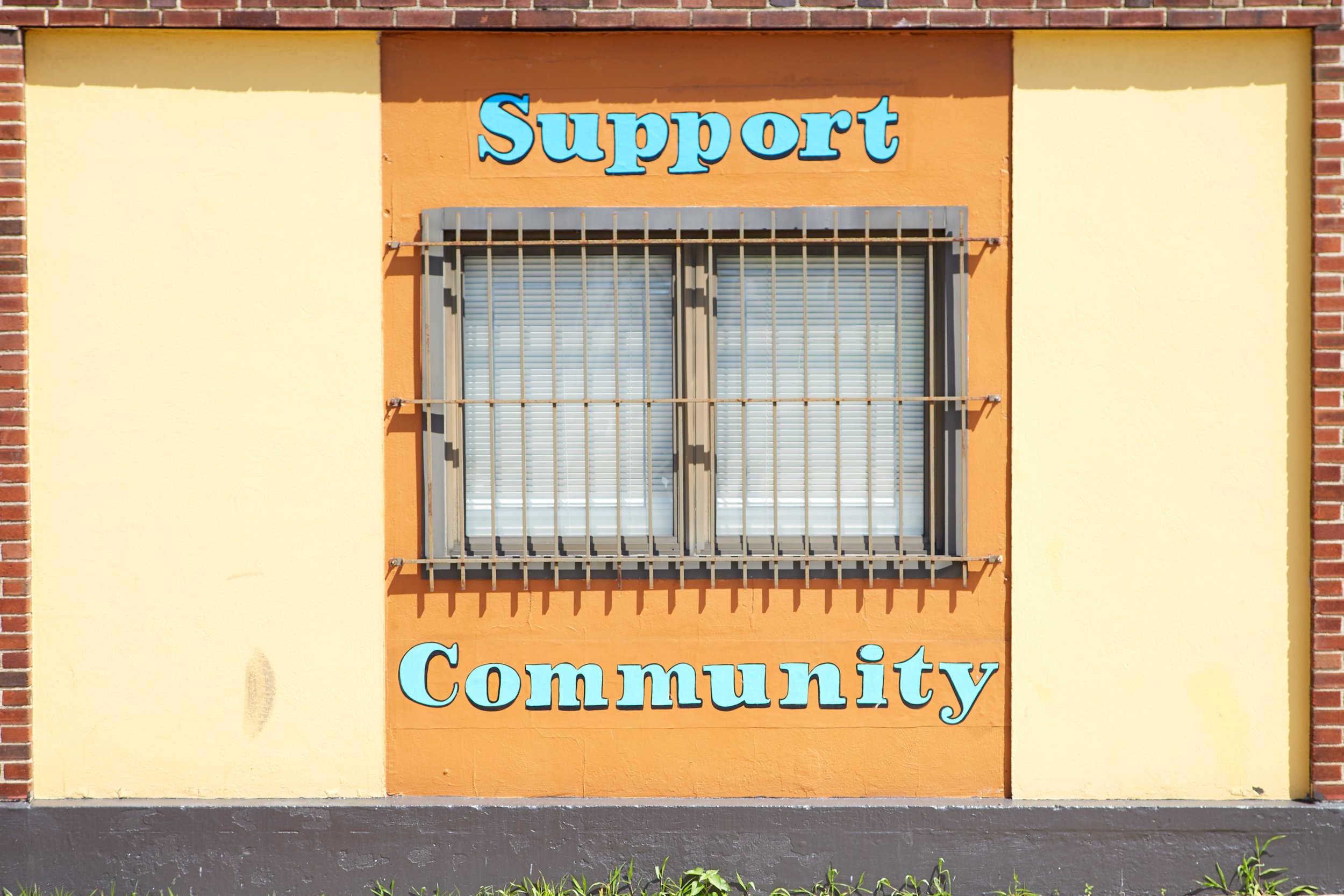Beyond Jargon: Defining Transparency In Philanthropy
 Photo by Helena Lopes
Photo by Helena Lopes
In any given industry, there are go-to buzzwords that have importance but can lose their impact and fade into all-encompassing vagueness over time. In the world of philanthropy, “transparency" is fast becoming an omnipresent term that many philanthropic organizations use and aim to achieve. But what does transparency really mean for them? Whether philanthropic foundations want to be more transparent with their funding practices, funding strategies, impact reporting, or simply being honest, it all comes down to communication in every context — both internally and externally.
In an effort to bring multiple perspectives into the discussion, we invited our client, Tracie Mooneyham, Program & Grants Manager at Robins Foundation, to shed some light on transparency means to her. She speaks about how Robins Foundation implements transparency into their internal communication and practices, and how they maintain a high metric of accountability to the public.
About Robins Foundation
Robins Foundation is a Richmond, Virginia-based family foundation with a 60-year history of leading transformational change through innovative philanthropy that inspires solutions to society’s greatest challenges.
The vision of the Foundation is to advance the greater Richmond community through strategic partnerships, collaborations and education, all of which will serve as a model for creating an environment of fairness and opportunity for everyone to thrive. To achieve this vision, Robins continues to conduct and support initiatives that encourage policy shifts, align with peers and nonprofits around community issues, and make investments that cultivate and support innovative solutions.
Let’s be clear here - I’m no expert on this topic. As a grants manager, I wear a lot of hats but subject matter expert is not one of them. I was introduced to philanthropy just a few short years ago and I’m continuously learning new trends and terminology. Since I’m still a ‘newbie’ in this world, I find myself listening deeply to speakers at conferences and reading articles relevant to my role. So bear all of this in mind as I introduce you to a scene of a (fictional) program meeting at a (fictional) foundation, just to create some context:
Enter scene.
Foundation Staff #1: “Our grantees, their proposals are magnificent! We have such passionate and motivated teams who are certain to be excellent stewards of the resources we provide them. There is always room for improvement, right?”
Foundation Staff #2: “Of course! How can we make things better? What could we possibly leverage to make even more progress? Do we ask for more reports, tighter budgets, deeper evaluation?”
Foundation Staff #3: “Impact! Have we asked about impact yet? I love impact, don’t you?”
Foundation Staff #1: “Well, we’ve encouraged collaboration, we simplified the application, and we provided capacity trainings; what are we missing? What do we talk about now?”
Foundation Staff #2: “Transparency – that’s it! We should throw open the lines of communication and let them know that we are passionate too! We must be more transparent!”
End scene.
Okay, I’m sure that you understand that I'm being purposely facetious. This is not me making a mockery of honesty and authenticity in the grantmaking space. However, as a grants manager, I am sensitive to certain words used in philanthropy that seem to get thrown around. I don’t have to repeat them here; I’m sure you have a few that you’re guilty of using, just like me. It’s just that I fear that we sometimes tread too close to the danger zone with ‘transparency’. Our peers and grantees alike, to continue a dialogue, may misuse this word for the sake of sounding relevant. This word is not a topic to be drawn out of a hat when conversing with colleagues in the field. It is a value by which you should measure your communications and relationships.
 Photo by Mathew Schwartz
Photo by Mathew Schwartz
Robins Foundation is committed to the work and partnerships that make Richmond, Virginia a vibrant community in which to live, work, and raise a family - where all its residents have abundant opportunities to thrive. As a team, we pride ourselves on our relaxed and open attitude, and our readiness to be transparent with one another. We can’t facilitate the work necessary to achieve our mission without doing so. Our “tribe” is small but close; we maintain informal communications outside the office and like to share lunch in office as often as possible. (You’ve never met a team who bonds over food as we do!) Without honesty and vulnerability in our communications, we would be out of step in how we make progress. It would be like herding cats. You can’t just expect your teammates (no matter how awesome they are at finishing your sentences) to read your mind; we must be clear about our goals, our expectations, and especially where we need help.
“Transparency is not only about what does or does not get communicated – it is also about whether or not foundation funders are being ‘clear,’ ‘open,’ and ‘honest’ when sharing information with nonprofits,” according to Center for Effective Philanthropy’s report, Foundation Transparency: What Nonprofits Want. With that research and, in my opinion, a commitment to our values to back us up, we’ve expanded our efforts to be more transparent without becoming translucent. That means tweaking our internal energy around being authentic with each other and projecting it outward. We’ve learned that the many entrenched challenges in our community cannot be addressed with programmatic support alone – we must work to update local and state policy for programs to achieve true results. It is our role as Robins Foundation to listen to the community voice and amplify it. However, if your community doesn’t trust that you are being open, honest, and clear about your intentions, then the challenges that parents face today become the challenges their children face tomorrow. To that end, that means that we as a foundation, have failed in our mission.
Robins Foundation has taken an exhaustive deep-dive into two of our principal investments: the Community Innovation Grant and Partnership for Families. We understand that community leaders want foundations to share more about what they are learning through their work, and so we have made our findings public. It’s important that we share our research in hopes that other leaders, nonprofit and funder alike, learn from our experiences. Our philanthropic legacy, for better or for worse, is going to be shaped not only by our investments but also by our integrity, and that means being open about where we fell short. This is just another way in which transparency is not something we ‘aim for’ or sell to you in a pitch at a conference. It is something that we include in every aspect of the work.
As someone who falls into the “next-gen” category, I know that finding a cause that matches my values is paramount, and that means I’m looking for that kind of research to indicate how equitable they are. I don’t need vague goals and cold responses to my inquiries – I want to know that they are real people, with real hearts, who believe that they can be the change they want to see in the world! I look at transparency through the lens of grantees needing a grants manager who is open to changing the application process or helping them to navigate a portal.
 Photo by Devin Avery
Photo by Devin Avery
Transparency is being honest, but not unkind, and using language that people understand. I want them to succeed, and so I remind myself that if I’m open about what I can and can’t do for them, then I know that they will trust me. This is about balancing being an equitable partner and being a funder. I try to find a balance between that aunt who doesn’t understand that Facebook is not a diary and the grumpy old man who wants everyone to mind their own business. It’s not easy, but as long as you know your audience, you can be true to who you are as a person and employee. Just think of transparency as the salt of the philanthropy space: add too much, and you run the risk of ruining something incredible; don’t add enough and end up with mediocre results – and who wants to be transparent about that?